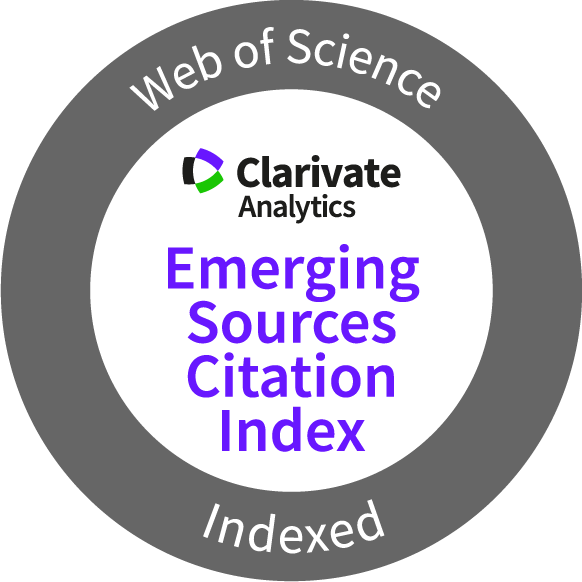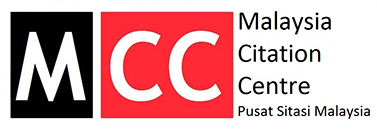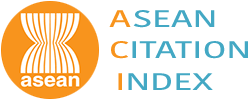Evaluating the Effects of Different Nutritional Conditions on Fruiting Body Development and Extraction Efficiency of Cordyceps militaris
Keywords:
adenosine, Cordyceps militaris, cordycepin, coconut water, soybeanAbstract
Cordyceps militaris is a valuable medicinal mushroom due to its bioactive components, especially cordycepin and adenosine, which have significant pharmacological activities. However, the yield and quality of fruiting bodies and their active compounds can vary greatly depending on the nutritional conditions during cultivation. This study aimed to determine the optimal culture medium and extraction procedure to enhance both biomass yield and bioactive compound content in C. militaris. The mushroom was cultivated under three nutritional conditions: Basal control medium, T1 medium supplemented with soybean powder and coconut water, and T2 medium supplemented with mineral salts (MgSO4, K2SO4) without soybean powder or coconut water. Growth performance, fruiting body morphology, and cordycepin/adenosine content were evaluated, followed by optimization of extraction efficiency using Box–Behnken design, taking into account extraction temperature, ethanol/mushroom ratio, and extraction time. T1 provided the most favorable conditions for the development of C. militaris fruiting bodies compared to the control group, including the indices stem length (9.82 ± 1.44 cm), diameter (0.83 ± 0.16 cm), number of fruiting bodies (185.88 ± 19.53), and weight (17.18 ± 2.73 g). HPLC analysis showed the highest content of cordycepin (337.93 ± 15.08 mg/100 g) and adenosine (394.51 ± 10.86 mg/100 g). Therefore, we used group T1 to evaluate the effects of temperature, ethanol/fungi ratio, and extraction time on extraction efficiency (17 treatments). The results showed that treatment 17, with the conditions of 60°C, ethanol/fungi ratio 20:1, 6 hr, gave the best extraction efficiency of 33.15%. These results showed that the addition of nutrients from soybean and coconut water and the factors (temperature, ethanol/fungi ratio, and extraction time) significantly affected both the biomass and bioactive compound content of C. militaris as well as the extraction efficiency, providing a basis for improving the large-scale cultivation and extraction process for functional food and pharmaceutical applications.
Downloads
Metrics
References
Chellapandi, P. & Saranya, S. 2024. Ophiocordyceps sinensis: A potential caterpillar fungus for the production of bioactive compounds. Exploratory Research and Hypothesis in Medicine, 9(3): 236-249.
Cui, J.D. 2015. Biotechnological production and applications of Cordyceps militaris, a valued traditional Chinese medicine. Critical Reviews in Biotechnology, 35(4): 475-484. DOI: https://doi.org/10.3109/07388551.2014.900604
Dong, J.Z., Ding, J., Pei, Z.Y., Lei, C., Zheng, X.J. & Wang, Y. 2013. Composition and distribution of the main active components in selenium-enriched fruit bodies of Cordyceps militaris link. Food Chemistry, 137(1-4): 164-167. DOI: https://doi.org/10.1016/j.foodchem.2012.10.021
Dong, J.Z., Liu, M.R., Lei, C., Zheng, X.J. & Wang, Y. 2012. Effects of selenium and light wavelengths on liquid culture of Cordyceps militaris Link. Applied Biochemistry and Biotechnology, 166: 2030-2036. DOI: https://doi.org/10.1007/s12010-012-9628-5
Du, J., Kan, W., Bao, H., Jia, Y., Yang, J. & Jia, H. 2021. Interactions between adenosine receptors and cordycepin (3'-deoxyadenosine) from Cordyceps militaris: Possible pharmacological mechanisms for protection of the brain and the amelioration of covid-19 pneumonia. Journal of Biotechnology and Biomedicine, 4(2): 26-32. DOI: https://doi.org/10.26502/jbb.2642-91280035
Ferreira, S.L.C., Bruns, R.E., Ferreira, H.S., Matos, G.D., David, J.M., Brandão, G.C., da Silva, E.G.P., Portugal, L.A., dos Reis, P.S., Souza, A.S. & Dos Santos, W.N.L. 2007. Box-Behnken design: An alternative for the optimization of analytical methods. Analytica Chimica Acta, 597(2): 179-186. DOI: https://doi.org/10.1016/j.aca.2007.07.011
Guo, M., Guo, S., Huaijun, Y., Bu, N. & Dong, C. 2016. Comparison of major bioactive compounds of the caterpillar medicinal mushroom, Cordyceps militaris (Ascomycetes), fruiting bodies cultured on wheat substrate and pupae. International Journal of Medicinal Mushrooms, 18(4). DOI: https://doi.org/10.1615/IntJMedMushrooms.v18.i4.60
He, L., Han, C., Li, P., Chen, Y., Liu, D. & Geng, L. 2009. Effect of mineral elements on colony types of Cordyceps militaris in Subculturing. Journal of Shenyang Agricultural University, 40: 672-677.
Huang, L., Li, Q., Chen, Y., Wang, X. & Zhou, X. 2009. Determination and analysis of cordycepin and adenosine in the products of Cordyceps spp. African Journal of Microbiology Research, 3(12): 957-961.
Jędrejko, K.J., Lazur, J. & Muszyńska, B. 2021. Cordyceps militaris: An overview of its chemical constituents in relation to biological activity. Foods, 10(11): 2634. DOI: https://doi.org/10.3390/foods10112634
Kang, C., Wen, T.C., Kang, J.C., Meng, Z.B., Li, G.R. & Hyde, K.D. 2014. Optimization of large-scale culture conditions for the production of cordycepin with Cordyceps militaris by liquid static culture. The Scientific World Journal, 2014(1): 510627. DOI: https://doi.org/10.1155/2014/510627
Kang, N., Lee, H.H., Park, I. & Seo, Y.S. 2017. Development of high cordycepin-producing Cordyceps militaris strains. Mycobiology, 45(1): 31-38. DOI: https://doi.org/10.5941/MYCO.2017.45.1.31
Kontogiannatos, D., Koutrotsios, G., Xekalaki, S. & Zervakis, G.I. 2021. Biomass and cordycepin production by the medicinal mushroom Cordyceps militaris-A review of various aspects and recent trends towards the exploitation of a valuable fungus. Journal of Fungi, 7(11): 986. DOI: https://doi.org/10.3390/jof7110986
Kuntiya, A., Hanmoungjai, P., Techapun, C., Sasaki, K. & Seesuriyachan, P. 2010. Influence of pH, sucrose concentration and agitation speed on exopolysaccharide production by Lactobacillus confusus TISTR 1498 using coconut water as a raw material substitute. Maejo International Journal of Science and Technology, 4(2): 318-330.
Lee, J., Cho, K., Shin, S.G., Bae, H., Koo, T., Han, G. & Hwang, S. 2016. Nutrient recovery of starch processing waste to Cordyceps militaris: Solid state cultivation and submerged liquid cultivation. Applied Biochemistry and Biotechnology, 180: 274-288. DOI: https://doi.org/10.1007/s12010-016-2098-4
Lin, Q., Long, L., Wu, L., Zhang, F., Wu, S., Zhang, W. & Sun, X. 2017. Evaluation of different agricultural wastes for the production of fruiting bodies and bioactive compounds by medicinal mushroom Cordyceps militaris. Journal of The Science of Food and Agriculture, 97(10): 3476-3480. DOI: https://doi.org/10.1002/jsfa.8097
Liu, L., Chen, Y., Luo, Q., Xu, N., Zhou, M., Gao, B., Wang, C. & Li, D. 2018. Fermenting liquid vinegar with higher taste, flavor and healthy value by using discarded Cordyceps militaris solid culture medium. LWT - Food Science and Technology, 98: 654-660. DOI: https://doi.org/10.1016/j.lwt.2018.07.064
Malik, N.H.A., Simarani, K. & Aziz, M.A. 2022. Soybean as an alternative nutrient medium for Bacillus subtilis growth. Malaysian Applied Biology, 51(4): 67-74. DOI: https://doi.org/10.55230/mabjournal.v51i4.12
Paterson, R.R.M. 2008. Cordyceps-a traditional Chinese medicine and another fungal therapeutic biofactory? Phytochemistry, 69(7): 1469-1495. DOI: https://doi.org/10.1016/j.phytochem.2008.01.027
Pintado, J., Torrado, A., González, M. & Murado, M.A. 1998. Optimization of nutrient concentration for citric acid production by solid-state culture of Aspergillus niger on polyurethane foams. Enzyme and Microbial Technology, 23(1-2): 149-156. DOI: https://doi.org/10.1016/S0141-0229(98)00042-8
Qin, P., Li, X., Yang, H., Wang, Z.Y. & Lu, D. 2019. Therapeutic potential and biological applications of cordycepin and metabolic mechanisms in cordycepin-producing fungi. Molecules, 24(12): 2231. DOI: https://doi.org/10.3390/molecules24122231
Raethong, N., Wang, H., Nielsen, J. & Vongsangnak, W. 2020. Optimizing cultivation of Cordyceps militaris for fast growth and cordycepin overproduction using rational design of synthetic media. Computational and Structural Biotechnology Journal, 18: 1-8. DOI: https://doi.org/10.1016/j.csbj.2019.11.003
Rózsa, M., Măniuțiu, D.N. & Egyed, E. 2021. Influence of magnesium (Mg) source on the Cordyceps militaris (L.) mushroom mycelium growth. Current Trends In Natural Sciences, 10: 333-340. DOI: https://doi.org/10.47068/ctns.2021.v10i19.043
Sakao, K., Sho, C., Miyata, T., Takara, K., Oda, R. & Hou, D.X. 2024. Verification of in vitro anticancer activity and bioactive compounds in Cordyceps militaris-infused sweet potato shochu spirits. Molecules, 29(9): 2119. DOI: https://doi.org/10.3390/molecules29092119
Sekar, N., Veetil, S.K. & Neerathilingam, M. 2013. Tender coconut water an economical growth medium for the production of recombinant proteins in Escherichia coli. BMC Biotechnology, 13: 1-9. DOI: https://doi.org/10.1186/1472-6750-13-70
Shashidhar, G.M., Kumar, S.S., Giridhar, P. & Manohar, B. 2017. Antioxidant and cholesterol esterase inhibitory properties of supplementation with coconut water in submerged cultivation of the medicinal Chinese caterpillar mushroom, Ophiocordyceps sinensis CS1197 (Ascomycetes). International Journal of Medicinal Mushrooms, 19(4): 337-345. DOI: https://doi.org/10.1615/IntJMedMushrooms.v19.i4.40
Singpoonga, N., Rittiron, R., Seang-On, B., Chaiprasart, P. & Bantadjan, Y. 2020. Determination of adenosine and cordycepin concentrations in Cordyceps militaris fruiting bodies using near-infrared spectroscopy. ACS Omega, 5(42): 27235-27244. DOI: https://doi.org/10.1021/acsomega.0c03403
Soltani, M., Abd Malek, R., Ware, I., Ramli, S., Elsayed, E.A., Aziz, R. & El Enshasy, H.A. 2017. Optimization of cordycepin extraction from Cordyceps militaris fermentation broth. Journal of Scientific & Industrial Research, 76(6): 355-361.
Sripilai, K., Chaicharoenaudomrung, N., Phonchai, R., Chueaphromsri, P., Kunhorm, P. & Noisa, P. 2023. Development of an animal-free nitrogen source for the liquid surface culture of Cordyceps militaris. Letters in Applied Microbiology, 76(5): ovad053. DOI: https://doi.org/10.1093/lambio/ovad053
Tang, J., Qian, Z. & Wu, H. 2018. Enhancing cordycepin production in liquid static cultivation of Cordyceps militaris by adding vegetable oils as the secondary carbon source. Bioresource Technology, 268: 60-67. DOI: https://doi.org/10.1016/j.biortech.2018.07.128
Wen, T., Li, M., Kang, J. & He, J. 2012. A molecular genetic study on fruiting-body formation of Cordyceps militaris. African Journal of Microbiology Research, 6(24): 5215-5221.
Yang, S., Jin, L., Ren, X., Lu, J. & Meng, Q. 2014. Optimization of fermentation process of Cordyceps militaris and antitumor activities of polysaccharides in vitro. Journal of Food and Drug Analysis, 22(4): 468-476. DOI: https://doi.org/10.1016/j.jfda.2014.01.028
Yuttavanichakul, W., Kanthong, N. & Pungsungvorn, N. 2023. Boosting cordycepin production through plant-based oils for vegetarian consumption. Journal of Applied Research on Science and Technology, 22(3): 254104-254104. DOI: https://doi.org/10.60101/jarst.2023.254104
Published
How to Cite
Issue
Section
Any reproduction of figures, tables and illustrations must obtain written permission from the Chief Editor (wicki@ukm.edu.my). No part of the journal may be reproduced without the editor’s permission




















